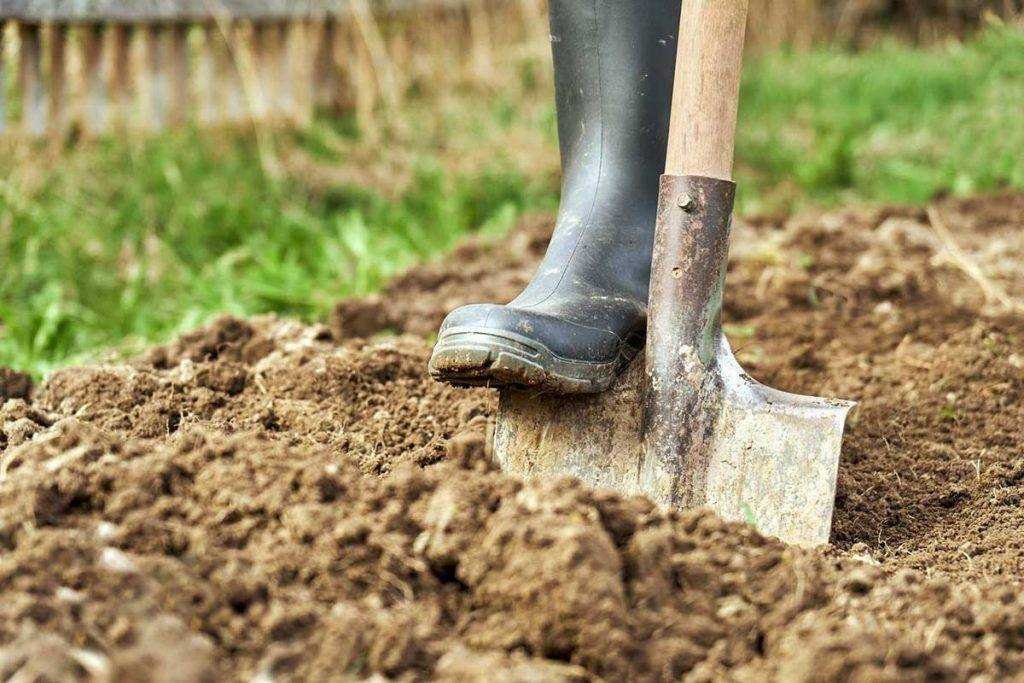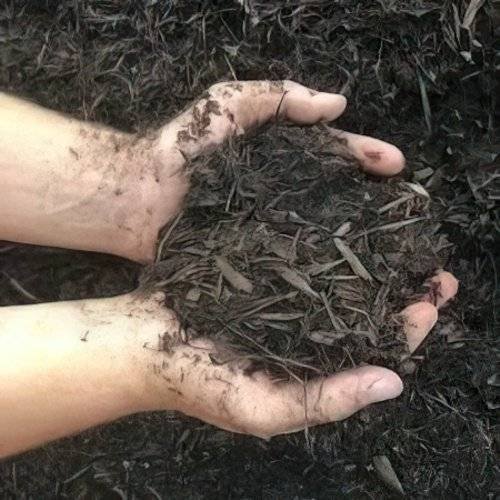Beautiful Plants For Your Interior
Soil Improver for Clay Soil

Whether you’re growing a vegetable garden or a large lawn, a good soil improver for clay soil can help you improve the quality and health of the soil.
There are several types of soil conditioners you can use, including organic compounds such as compost, mulch, and gypsum. Depending on your soil, you might also benefit from growing cover crops to help improve the soil quality and keep it healthy.
Below though, we will concentrate on the rectification of clay soils. If you have sandy soil or soil that needs improving generally, then check out my other post on How to Improve Your Soil for Gardening.

Soil Improver for Clay Soil: Shredded wood (organic) is another good option for improving clay soil
Organic Matter
Adding organic matter such as a good ‘mulch’ to clay soil can help to improve its texture, aeration, drainage, and nutrient levels. The right mulch can also help protect your plants from harsh weather and help to prevent moisture loss. It can also prevent weed growth.
One of the best organic mulches to use on clay soil is wood chips. They provide the soil with a high carbon content, insulate the soil, and allow for better moisture retention. They are also good for regulating soil temperature and help to prevent soil compaction from heavy rainfall.
Work into your soil, garden compost, shredded wood, or paper even sawdust, which is another good option. They provide the clay soil with a good balance of nutrients and encourage the growth of microorganisms. Organic matter makes a good addition to the soil around trees and shrubs.
Soil Improver For Clay Soil: Transform your clay soil
Cover Crops
Using cover crops as soil improvers on clay soils has been shown to be an effective way to enhance the structure of the soil and increase the amount of organic matter available for plant uptake.
Some of the most effective garden or allotment cover crops for clay soils are certainly most things from the Brassicaceae family. Many of these plants make great food crops for the table, and popular brassicas you might already be growing include Kale, Cabbage, Mustard, and Radish. These plants all improve the structure of the soil and provide excellent mulch for plants.
The benefits of cover crops for clay soils include moisture conservation and provide soil aeration, and the ability to attract beneficial insects. In addition, they prevent erosion during the non-growing season and help prevent nutrient loss.
These crops also have deep tap roots that can break up compacted soil (aeration) and pull nutrients from the subsoil. These plants also fix nitrogen and help to build soil tilth.
Aeration
Because clay soil is dense and sticky it does not get enough oxygen which is detrimental to soil health. Because of this dense texture ‘aerating’ is one of the best things that you can do to improve your soil. Aeration is simply introducing ‘air pockets’ into the soil that oxygen can penetrate.
Introduce ‘air pockets’ into your soil by using tools like a ‘digging fork‘ or ‘broad fork‘, they both work in similar ways in that they introduce ‘air pockets’ into the soil without disrupting it to the point where you’re causing damage.
Inorganic Soil Conditioners
Using some inorganic soil conditioners for clay soils can also be a useful solution to some problems. However, they can also cause problems with weed seeds. These can sometimes be difficult to control and or remove. They can also possibly pollute the soil with chemicals.
Clay soils have a high cation exchange capacity (CEC). These are soils that hold a large number of plant nutrients such as Potassium, Magnesium, Ammonium, Calcium, and Zinc. However, clay soils hold onto water better than sandy soils as well, therefore it makes sense clay soil can also hold onto fertiliser and pesticides which may not be beneficial to your plants for several reasons.
Clay soils need amendments to mostly increase their soil permeability. This can include the use of organic and inorganic, amendments. Inorganic garden gypsum is one such amendment that can improve drainage and air exchange in clay soils.
Gypsum
Gypsum is a soft sulfate mineral, composed of calcium sulfate dihydrate. Using gypsum as a soil improver for clay soils can be an effective way to increase the health of your plants. Gypsum can be applied to the surface of the soil, or buried in the soil in deep tillage.
The primary objective of this process is to combine the small particles of clay soil into bigger chunks like those found in sandy soil, making it simpler for water and roots to penetrate the ground. This in turn facilitates the plants to make better use of the nutrients.
Clay soils usually have high levels of sodium and calcium, and these two elements can be removed by gypsum. Gypsum also helps reduce excess aluminium.
Plants That Thrive in Clay Soils
Luckily, there are plenty of plants that thrive in clay soils or clay-amended soils. Whether you’re looking for a dazzling flowering shrub or a hardy perennial, you’re sure to find something to suit your tastes and garden conditions.
(See our list below)
The best plants for clay soils are ones that have good drainage, good root systems, and can handle some amount of water. This is because clay is dense and tends to retain water for a long time. The soil also holds nutrients and is easy to break up.
Plants that thrive in clay soils also happen to be ones that require little maintenance. You can use mulch to keep your plant’s roots cool and moist. This will help prevent your plants from drying out in the heat of summer.
Plants/Shrubs that do well in clay soils:
- Roses
- Foxgloves
- Elder
- Birch
- Crab Apple
- Holly
- Viburnum tinus
- Buddleja
- Anemone
- Acer
FAQ’s
How Often Should You Add Soil Improver to Clay Soil?
You should add soil improver to clay soil annually, preferably in the autumn or early spring before planting season.
What is The Difference Between Soil Conditioner And Soil Improver?
Soil conditioner is used to improve the overall quality of soil by adding nutrients and improving soil structure, while soil improver is used to address specific soil problems, such as drainage issues or nutrient deficiencies
Can You Mix Sand With Clay Soil?
Yes, mixing sand with clay soil can improve drainage and aeration. However, adding too much sand can create a hard, compacted soil
Conclusion
Adding soil improvers such as woodchips and other organic materials to clay soils can be beneficial for plant growth. The addition of soil improvers increases the organic matter content of the soil, which provides numerous benefits including improved nutrient availability, better water infiltration and retention, and improved soil structure.
In addition to providing better conditions for plant growth, soil improvers also help to improve soil biology and soil fertility. By adding soil improvers to clay soils, gardeners can create a more conducive environment for plant growth and development, as well as improved soil health.
If this post has helped you in any way, please share it with your family and garden-loving friends or anybody looking to improve the soil and structure of clay soil
Finally, you can always pop over to our FAQ page. It’s full of information on a whole host of gardening tips and tricks, queries and gardening jargon you may need to know about a whole host of things for the home and garden. Find out more about planting, gardening, and a whole host of other answers to your home and garden questions and queries.
